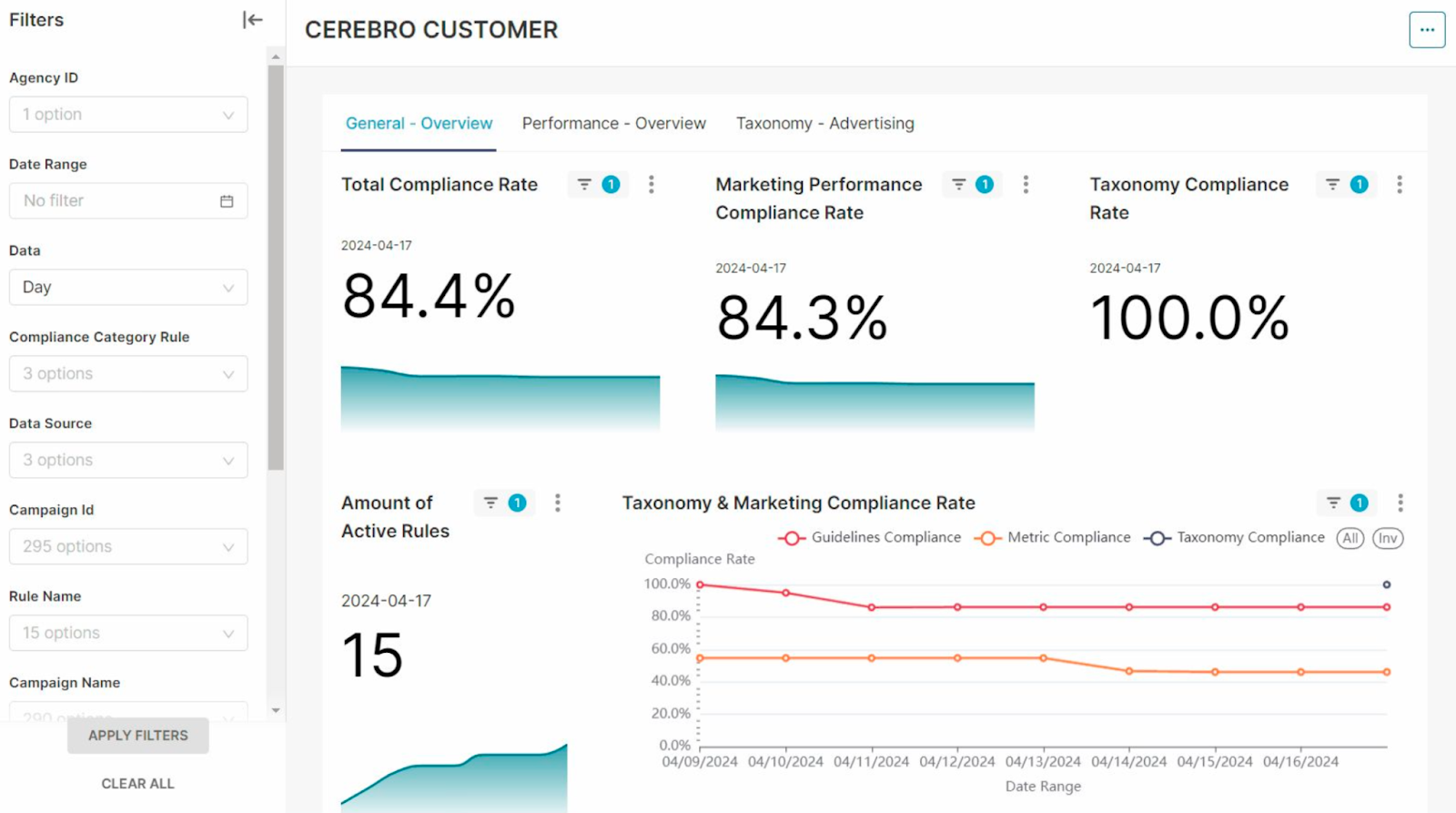B2B programmatic advertising leverages technology and automation to efficiently purchase and display ads to specific business audiences. This approach is essential for optimizing ad spend and reaching target audiences with precision. This guide will provide actionable insights into B2B programmatic advertising, its workings, and strategies to maximize its effectiveness.
What Is B2B Programmatic Advertising?
How Does B2B Programmatic Advertising Work?
Understanding the mechanics of B2B programmatic advertising helps leverage its potential.
Here’s a look at how the process and essential B2B programmatic advertising terms you need to know:
- Demand-Side Platform (DSP): Advertisers use DSPs to manage multiple ad exchanges and data exchanges through a single interface. DSPs allow advertisers to buy ad inventory in real-time based on predefined criteria, such as audience segments, budget, and campaign goals.
- Supply-Side Platform (SSP): Publishers use SSPs to manage and sell their ad inventory. SSPs help publishers maximize their revenue by making their inventory available to multiple ad exchanges and optimizing the selling process.
- Data Management Platform (DMP): DMPs collect and analyze data from various sources, including first-party (own data), second-party (partner data), and third-party (external data) sources. This data is used to build detailed audience profiles and segments, enabling precise targeting.
- Real-Time Bidding (RTB): RTB is the core mechanism of programmatic advertising. When a user visits a website, an ad impression is put up for auction in real-time. Advertisers bid on this impression based on the user’s profile and the likelihood of achieving their campaign objectives. The highest bid wins, and the ad is instantly displayed.
- Audience Targeting: Using the data from DMPs, advertisers can target specific business audiences with high precision. This includes targeting based on firmographics (e.g., company size, industry), behavior (e.g., website visits, content consumption), and intent signals (e.g., search queries, downloads).
- Ad Exchanges: Ad exchanges are digital marketplaces where DSPs and SSPs interact. They facilitate the buying and selling of ad inventory from multiple publishers to multiple advertisers, enabling a broad reach and efficient transactions.
- Creative Optimization: Programmatic platforms often include tools for dynamic creative optimization (DCO), which tailor ad creatives in real-time to match the specific audience segment. This ensures that the ad content is relevant and engaging, improving the chances of conversion.
- Campaign Management and Analytics: Advertisers continuously monitor and adjust their campaigns using real-time analytics. Programmatic platforms provide detailed insights into performance metrics, such as impressions, clicks, conversions, and ROI. This allows for ongoing optimization to improve effectiveness and efficiency.
B2B Programmatic Advertising Do's and Don'ts
When implementing B2B programmatic advertising, there are several key practices to follow and pitfalls to avoid to ensure success.
Do's
Understand Your Audience
Clearly define your target audience based on industry, job function, company size, and other relevant criteria to ensure your ads are shown to the right people. For example, a company selling CRM software should tailor messaging to address the specific pain points of sales managers.
Leverage Data for Personalization
Utilize behavioral, contextual, and intent data to create highly personalized campaigns. An enterprise software company can use data to show personalized ads based on a user's previous interactions, such as visiting specific product pages or downloading whitepapers.
Set Clear Goals and KPIs
Establish concrete goals and key performance indicators (KPIs) for campaigns, such as lead generation or increased brand awareness. A campaign goal might be to increase webinar sign-ups by 20%, with KPIs tracking click-through rates, conversions, and overall engagement.
Choose the Right Tech Partners
Select technology partners, including DSPs, SSPs, and data management platforms, that offer robust targeting options and transparency features. Opt for a DSP with strong fraud detection capabilities to ensure ads are seen by genuine prospects.
Here are some of the most popular programmatic DSPs.
| Feature/Aspect | Adobe Advertising Cloud | MediaMath | AdRoll |
|---|---|---|---|
| User Interface | Intuitive, designed for enterprise clients | Clean interface with advanced features | User-friendly for businesses of all sizes |
| Data Integration | Integrates with Adobe suite and other third-party tools | Robust integration with popular ad exchanges & DMPs | Integrates with major eCommerce platforms |
| Audience Targeting | Advanced targeting with Adobe Audience Manager | Precision targeting with proprietary Brain algorithm | Retargeting focus with dynamic creative |
| AI & Machine Learning | Adobe Sensei for optimization & automation | Predictive algorithms for optimized bidding | AI-driven product recommendations |
| Ad Formats Supported | Display, video, audio, native, CTV, and more | Multi-channel including video, mobile, and native | Display, social, email, and video |
| Pricing Model | Custom, based on ad spend and modules used | Custom, often based on ad spend and features required | Performance-based and flat-rate plans |
| Customer Support | Dedicated support & training resources | 24/7 support, training, and consultation | Email, chat, and phone support |
| Analytics & Reporting | Comprehensive with real-time insights | Real-time analytics and actionable insights | Transparent cross-channel reporting |
Allocate Budget for Testing
Dedicate a portion of the budget to testing different strategies, creatives, and platforms. Test different ad formats, such as video versus display ads, to determine which yields better engagement and conversions.
Use Account-Based Marketing (ABM)
Implement ABM strategies by focusing your programmatic efforts on high-value target accounts. Customize your ads and content to address the specific needs and pain points of these accounts. This increases the relevance and effectiveness of your campaigns.
Don'ts
Neglect Campaign Data Management
Effective campaign data management is crucial for the success of B2B programmatic advertising. Validate every component of your campaigns, from UTMs to targeting criteria, to ensure accuracy and consistency. Regularly check and refine audience targeting, ad creatives, and conversion tracking to avoid fragmented data and suboptimal performance.
Integrate an automated campaign data management and data governance solution to streamline the process.

Improvado Marketing Data Governance is an AI-powered campaign management and data governance tool. The platform monitors adherence to campaign, operational, and business data guidelines and alerts you when there are any issues and deviations from set rules.
Marketing Data Governance can monitor naming conventions, targeting, UTM mark up, brand consistency, and other operational guidelines, for instance, if frequency caps are set correctly, what keywords you are using, or if the publisher exclusion list is used.
All rules are set with natural-language guideline input, plain English, and nothing else.
Don’t Neglect Ad Frequency Capping
Avoid bombarding your audience with too many ads by setting appropriate frequency caps. Overexposure can lead to ad fatigue and a negative perception of your brand. Balance visibility with user experience to maintain engagement.
Overlook Brand Safety
Ensure your ads are displayed in a safe and appropriate context by using brand safety tools and whitelists. Avoid placements on low-quality or controversial sites that could harm your brand reputation.
Overlook Ad Fraud
Being complacent about ad fraud can drain the budget and distort metrics. Regularly audit campaigns and use advanced analytics to detect and mitigate fraudulent activities.
Rely Solely on One Channel
Depending on a single advertising channel is risky. Integrate campaigns across multiple channels, such as display, social, mobile, and video, to ensure consistent messaging and expanded reach.
Skip Real-Time Optimization
Ignoring the need for real-time adjustments can hinder campaign performance. Continuously monitor campaign performance and make necessary adjustments on the fly to enhance results.
Fail to Monitor Campaign Performance
Launching campaigns without a system for ongoing monitoring and analysis can lead to missed opportunities for improvement. Use real-time metrics to track performance and make strategic adjustments to improve outcomes.
Ensuring Campaign Data Consistency and Compliance with Marketing Data Governance
Effective data governance is crucial for maximizing the benefits of B2B programmatic advertising. Improvado's Marketing Data Governance, an AI-powered campaign governance tool, ensures compliance with marketing guidelines, validates data and metadata consistency, and provides real-time alerts on any issues and inconsistencies.
This level of automation reduces manual errors, allowing a focus on strategic tasks. Features like real-time alerts and notifications enhance operational efficiency by ensuring consistent marketing workflows and promptly addressing issues, leading to more accurate performance measurements and better campaign outcomes.
.png)



.png)
